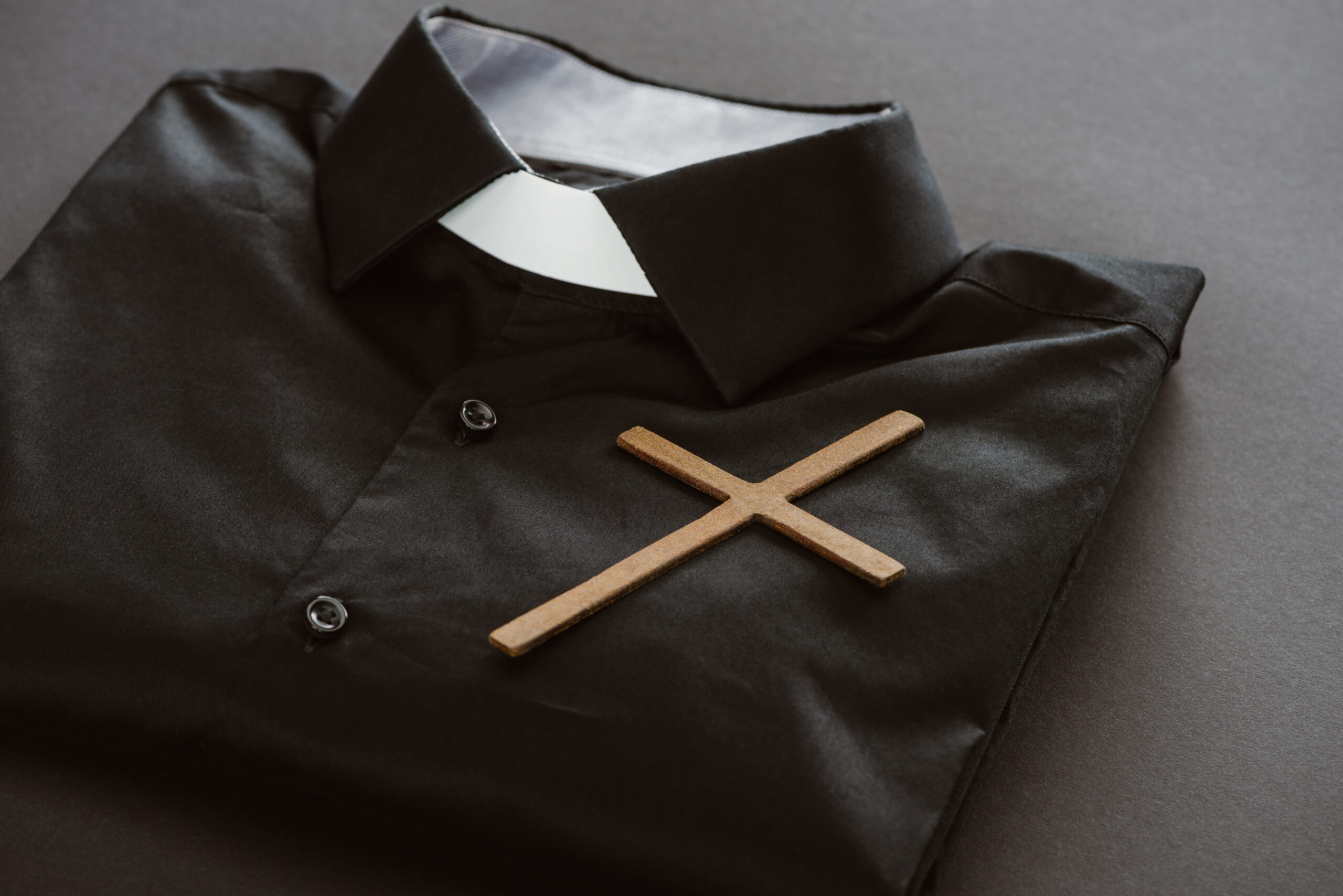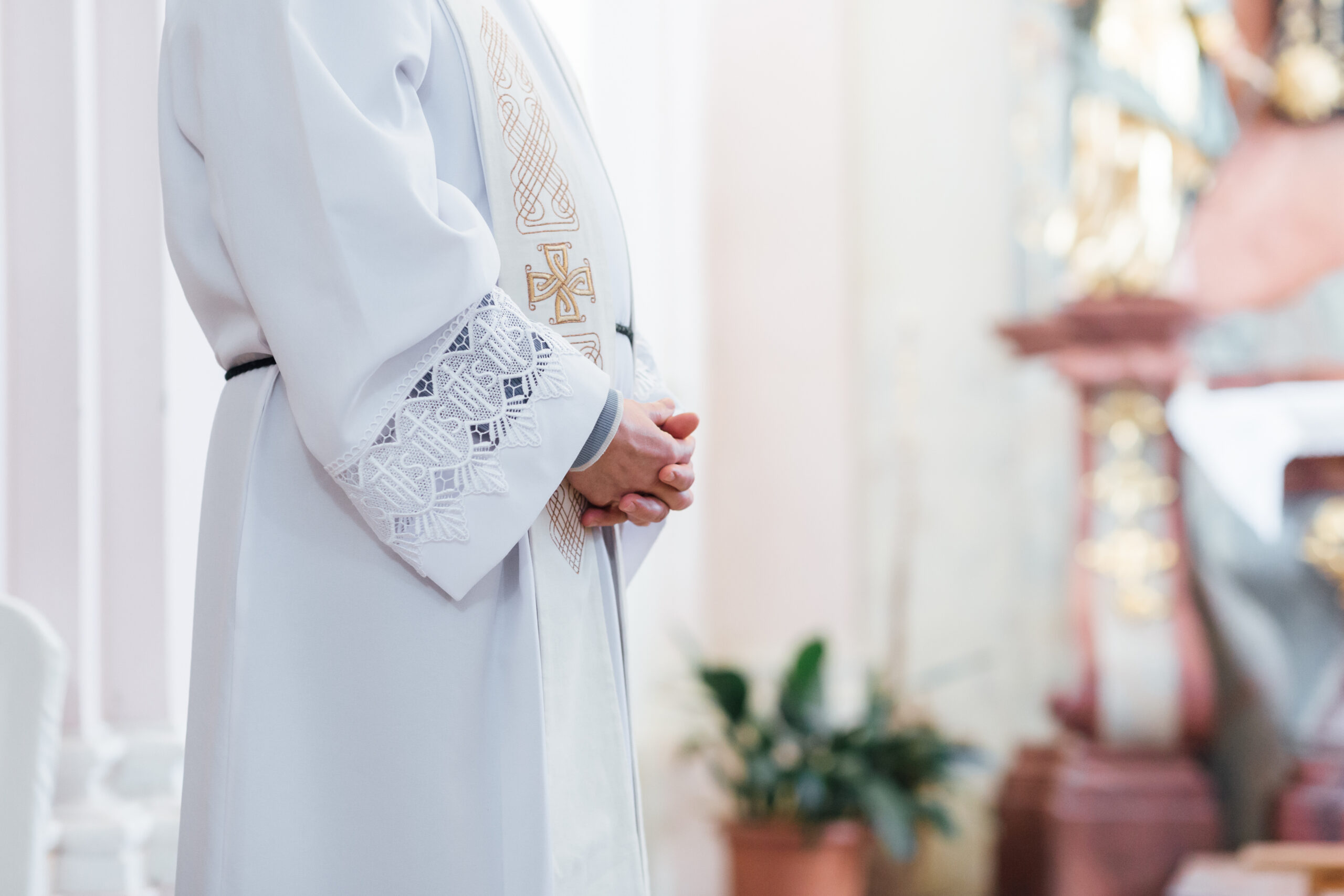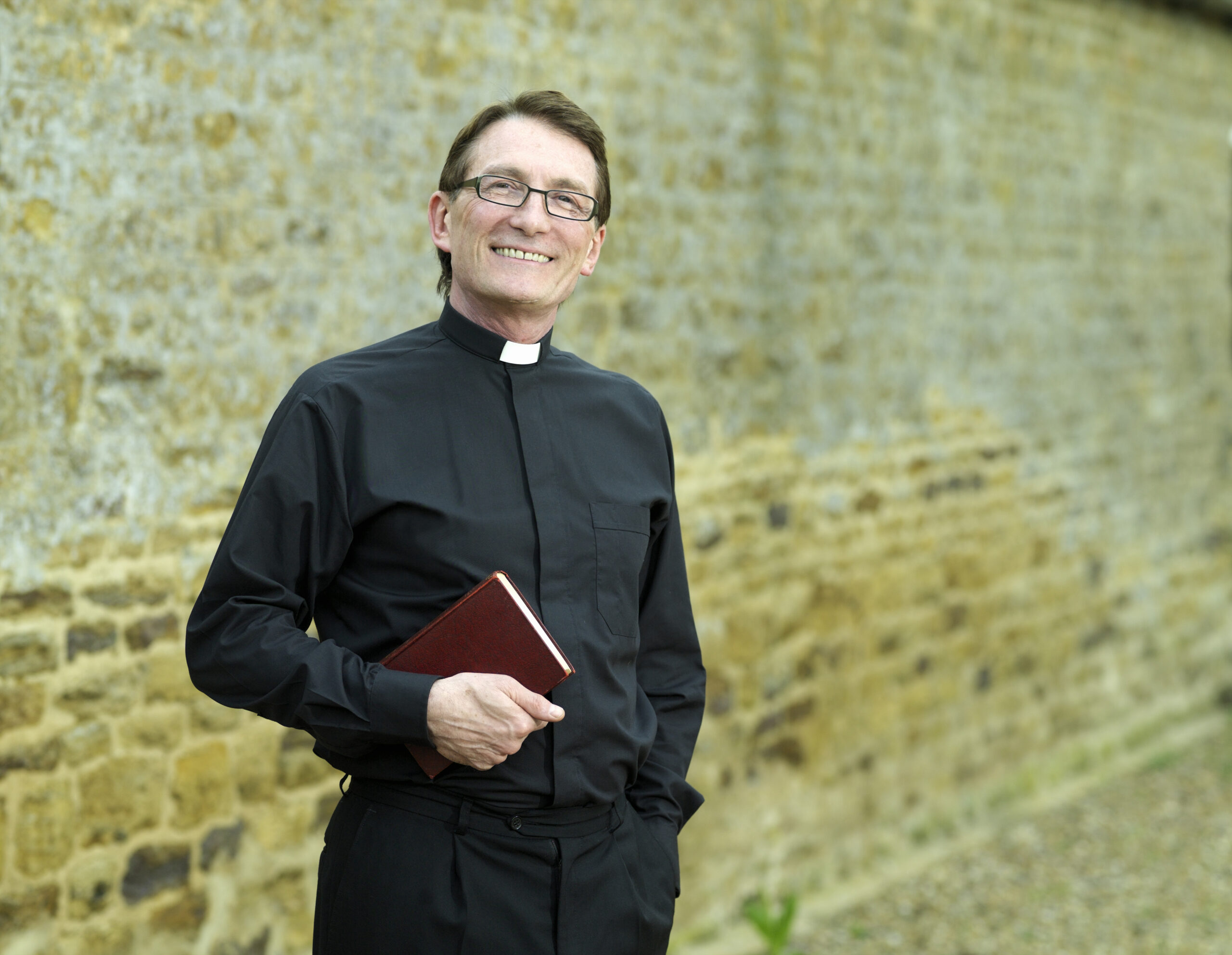For centuries clerical clothing has been a symbol of religious authority as well as a commitment to a life dedicated to the Church.
From traditional catholic vestments to cassocks and the clerical collar, over time, traditional church apparel has shifted in favour of modern church clothes.
Let’s have a look at the history of clerical clothing.
Early origins
The origin of clerical attire can be dated as far back as the Roman Empire when Clerics began wearing tunics (albs) to distinguish themselves from the laity.
As the church began to formalize the hierarchy, some of the clerical garments began to take on more sacred meanings.
Some examples of traditional catholic vestments:
- Alb: A long white garment worn to signify purity with its influence being from Roman tunics.
- Stole: A long band worn around the neck which hangs down and signifies the clerics responsibility and authority.
- Chasuble: The outer garment worn over other vestments symbolizing the virtue of charity and usually worn by a priest during mass.
- Cassock: A long ankle length robe that is often worn during services. It would have been worn outside of church at one point to distinguish the Clergy.
- Cincture: A rope belt worn around an alb or cassock that symbolises spiritual preparation and virtues of chastity.

During the 16th and 17th centuries church apparel became more elaborate and began to use material such as silk and gold thread, and the chasuble began to include rich embroidery.
As we reach the 19th and 20th centuries there was a demand for more uniform liturgical clothing. While the symbolism was still important, a more standardized appearance was being encouraged as to reinforce unity among the church.
Traditional catholic vestments such as the cassock and the clerical collar became more popular. Most cassocks were black as standard, with coloured piping to symbolise the wearer’s authority in the church.
As we approach the 60s and 70s clothes for church began to take a much more modern approach, with the black cassock giving way to a more modern shirt with a clerical collar much like the Roman shirt and dog collar we see today.
While still sacred, vestments became simplified, being made of lighter and simpler materials and generally being less ornate and more flowy.

Balancing tradition with a modern style
As we reach this century, there is a clear shift in clerical styles, with clothes for church reflecting a change in attitudes.
Clerical clothing somehow feels less fussy with clergy embracing modern vestments that emphasise function over formality. In some regions, clergy have adopted a plain polo shirt with a more discreet roman collar reflecting a desire to engage with the world and the public in a more contemporary and approachable way.
To honour tradition, some clergy have begun to reestablish more ornate traditional catholic vestments with fiddleback chasubles and lace albs for important services. Younger priests are bringing an everyday modern style, whilst still being drawn to and wanting to honour the spiritual depth of tradition.

At Evess, we understand the importance of combining tradition with modern style.
We sell a range of more traditional church apparel along with more modern church clothing such as shorts sleeve clergy shirts.
Browse our range of church clothing online.